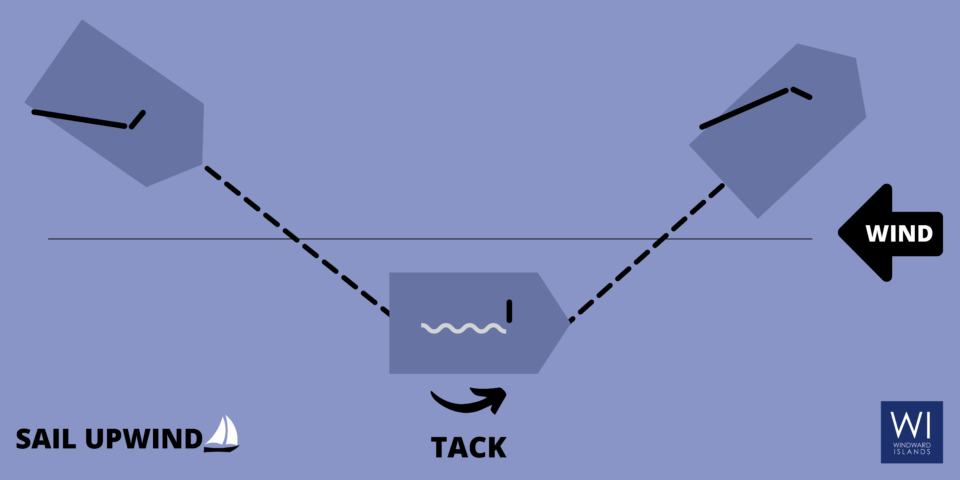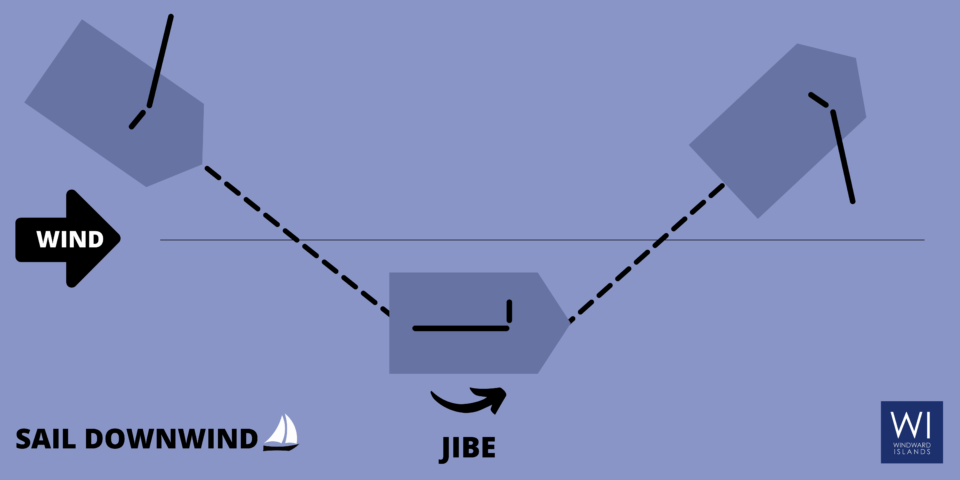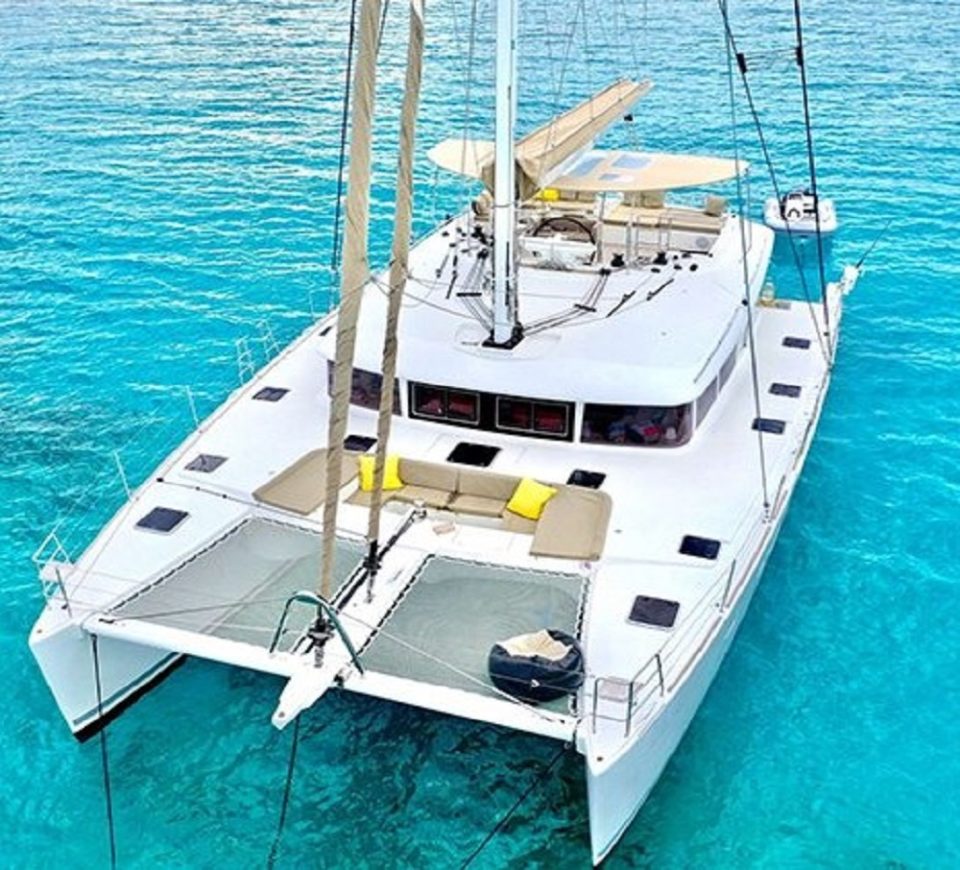
Sailing upwind is perhaps one of the most misunderstood aspect of sailing for most beginners.
The wind, this invisible force, personified and divinized in mythology and religion, has been harnessed throughout human history, but going against it is somehow harder to grasp intellectually than it actually is.
Not surprisingly, one of the first sailing fundamentals you learn when you are new to this world is therefore upwind sailing.
What does this mean? How does a yacht sail upwind? Read on and you will understand this obscure concept.
What is upwind sailing?
Let’s start with a simple and short definition: upwind is when going against the wind.
However, you do not directly go against the wind. That is physically impossible, as you may have already guessed.
“Sailing upwind” means sailing as close to the direction the wind is blowing from as possible. In a word, about 45 degrees away, left or right, from the apparent wind’s direction. You are not going against the exact direction of the wind, but you can move forward against the wind without directly facing it.
What happens if you cross this imaginary line steering the boat closer into the direction of the wind? The sails start to flap around and the boat slows down.
As an old sea-dogs once said: “flapping sail, unhappy sail!” Or something like that.
The main differences between sailing upwind and downwind
While sailing upwind means going against the wind, sailing downwind is going with the wind. It is simply the opposite.
Obviously, sailing downwind is much easier than sailing upwind. If the sailing concept of upwind and downwind is still obscure to you, try with a bicycle and you should quickly understand.
Another important difference involves how the boat is steered and the sails trimmed when going downwind or upwind.
Going upwind, one generally pulls the sails all the way in and then uses them as a guide to steer the boat. When sailing downwind, one usually aims the boat straight to the desired course, and then uses this heading as a guide for how to trim the sails. Upwind sails work like airplane wings. They are trimmed to give lift. Downwind, the air is behind the sails, and they drive the boat by filling and pulling it.
Let’s have a look at how sailing upwind is actually performed while sailing.
Tacking: the main upwind sailing tactic

As we have seen above, sailing upwind means sailing towards the general wind direction but not directly into the wind; the sails would flutter and the boat would stop. Instead, sailors use a zigzag motion with moving the bow of the boat, left and right, through the wind in order to make headway. This tactic is called “tacking”.
This sounds a very simple thing to do but, in fact, it is tough to be good at. This requires some cooperation from the crew and commands will keep everyone working together. Tacking is teamwork and strength lies in numbers!
Let’s continue with the essential vocabulary mastery. A series of tacking moves, in a zig-zag pattern, is called beating. The opposite manoeuvre to tacking is called jibing. A jibe consists in turning the stern of the boat through the wind so that the wind changes from one side of the boat to the other side. It allows sailing upwind in the desired direction.

When facing the wind and its various caprices, the art of sailing is real choreography!
How to tack a sailing yacht to sail upwind (against the wind)
Let’s now get to the heart of the matter: the technical aspect of tacking a sailing yacht to sail upwind.
First things first
A good communication and a coordinated team are a must when tacking a sailing boat. To follow, the different steps of the process but before a brief glossary of the key terms.
Port and starboard refer to the left and right side of the vessel, not the observer.
Port Tack: port tack is when the wind is blowing from the port side (left) of the vessel.
Starboard Tack: a boat is on a starboard tack if the wind is coming over the starboard (right) side of boat with sails on port (left) side.
Jib Sheets: ropes and lines to trim or “sheet” the jib.
Working sheet: jib sheets that are actively trimming the jib. They are tight on to the clue and pull out and trim the jib sail.
Lazy sheet: jib sheets ropes that are unused momentarily.
Main sheet: Rope that is attached to the boom and is used to control the mainsail.
How to tack a sailboat properly in 10 Steps

1- The skipper makes sure that the new course is clear.
2- If that is the case, he shouts “Ready about” to the crew members to be ready. The perfect translation of “Ready about” would be ” before I throw the helm over, are you ready to let go of the old jib sheet, trim in the new and move to the other side? ».
2- He now waits for them to prepare the sheets and lines for managing the sails.
4- In the meantime, the skipper estimates the lay line, that is to say where the boat is going to be pointing after the tack. When sailing upwind the lay line is generally 90 degrees to your left or right from where you stand now. This step is essential.
5- When the skipper hears “Ready” or “All clear” from the crew, he responds “helm to lee” to notify the crew that he is about to start the tacking manoeuvre by turning the steering either to portside or starboard side. When the wind starts blowing the jib to the lazy-sheet, it is the time to stop turning.
6- Then, with calling Lee-Ho or Hard-a-Lee, the skipper announces he is turning the boat towards the wind. The vessel is tacking. As the headsail starts to flap, the crew on the working sheet eases and releases the sheet from the winch.
7-At this stage the wind will have switched sides and is now blowing to the other side of the sails. This is the time when the crew moves to the other side of the sailboat. This point is crucial for the balance of the vessel.
8- The boat continues to turn through wind and the jib blows across to the new side, flapping a little as it goes.
9- This is the good time for the crew on winch to pull in the new working sheet and start pulling in the line on the lazy sheet (now being working sheet) on the other side. The main sheet needs to be tightened in the centre of the boat.
10- The sailboat starts to pick up speed at about 90 degrees off from the original course. The skipper keeps the tiller in the middle. The crew starts to trim and adjust the sail. The tack has been successfully performed!
Read also : New Lagoon 51 Catamaran: The Perfect Combination of Modernity and Sustainability

Tacking to sail upwind with a monohull vs tacking with a multihull
The operations of sailing a multihull and a monohull are basically the same. Almost.
One of the main differences is actually in tacking, so in sailing upwind.
A monohull, much easier to manoeuvre, will tack quickly and is faster to respond to the helm than a multihull.
Conversely, tacking with a multihull can be quite challenging. Because of its lighter weight, wider beam and windage, the multihull will suddendly slow whereas the tacking requires a sufficient speed not to lose too much forward momentum.
Therefore, turning through the wind will be more hesitant than on a ballasted monohull, which carries its momentum through the wind.
Tacking with a monohull vs tacking with a multihull: a clear advantage for monohull!
That’s it, you know everything there is to know about sailing upwind. If you are unsure about how to sail against the wind, you can always charter a yacht with an experienced crew or skipper and see how it’s done pratically.








